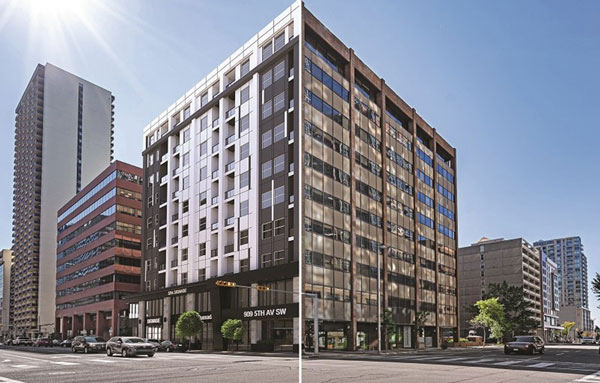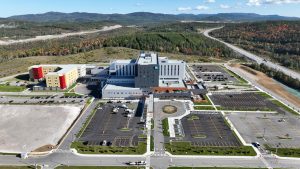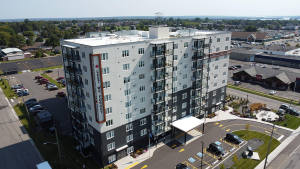COVID-19 introduced the concept of remote and hybrid work into the world of commerce. Although a partial return to the office has occurred over the past 18 months, office vacancies remain at high levels.
Widespread office vacancies in cities, particularly among older B and C-Class buildings, can have an unfortunate domino effect. Property values and taxes decline, retail foot traffic and use of public transit decreases as people move away and street crime escalates.
These inter-related declines can result in what from Columbia and New York Universities term “an urban doom loop,” dropping property values even further.
Building owners are left with three options: Converting spaces to residential units; offering smaller floor plates, more flexible leases and upgraded tenant amenities; or undertaking retrofits and energy upgrades to improve attractiveness.
Given today’s housing shortage, the perfect solution might appear to be converting office space to residential space.
That concept interests both the public and private sectors.
However, converting commercial offices into residential spaces is proving easier said than done. According to researchers, the percentage of buildings in the U.S. suitable for such conversions hits a wall at around 11 per cent.

Canadian numbers are not much different. The Canadian Urban Institute conducted a examining office conversion potential in several cities. It determined as many as 22,000 residential units could be created in 11 cities across the country. These numbers represent a tiny portion of the 5.8 million new homes estimated to be needed by 2030 in order to restore affordability.
The biggest challenges involve MEP. Office washrooms are typically clustered together. Commercial HVAC and electrical systems are laid out very differently than in residential buildings. Creating residential units with individual access to daylight can be difficult. These changes aren’t always practical or even feasible.
That isn’t stopping various levels of governments from trying.
Federally, the Liberal government $600 million in 2021 towards such efforts.
“This is an opportunity for property owners and communities to explore converting excess space into rental housing, enhancing the liveability and affordability of urban communities. We’ll convert space in the federal portfolio, and commercial buildings, and work with municipalities to create a fast-track system for permits to allow faster conversion of existing buildings, helping maintain the vibrancy of urban communities,” the government stated.
However, it is not clear what funding has been placed in specific projects.
Meanwhile Canadian cities are taking action.
Calgary has given it a shot, offering developers $75 per square foot for converting offices into residences. Sadly, it didn’t work out well in terms of numbers. Only 10 buildings representing less than 1,300 units were created. In mid-October, the city paused the program.
Toronto may be interested, however. Late last month, a motion came before the city’s planning and housing committee seeking to study the matter of office conversions.
A second option would be updating leasable commercial spaces to reflect the latest trends in office work.
Co-working and “flex” spaces came into in demand in many larger urban centres during the COVID pandemic. Rather than seeking tenants leasing whole floors or more, building owners and operators can break those larger spaces into smaller floor plates, and add amenities like communal lounges, meeting rooms and libraries. Offering shorter leases is another modification many landlords are being forced to consider.
However, the concept of flexible work spaces took a hit with the that industry leader WeWork had declared bankruptcy protection. The company leases about 1.5 million square feet of Canadian office space.
Digital and energy management firm, Schneider Electric, offers a third and longer-term option.
Its outlines a multi-step pathway to energy efficiency and decarbonization, with ROIs for each stage.
“Digital solutions and onsite power generation are immediately beneficial for the climate and are required foundational steps for building electrification to be climate-positive,” it says.
Retrofitting and upgrading would help older buildings become more attractive in today’s competitive leasing market and add many years to their financial viability.
John Bleasby is a Coldwater, Ont.-based freelance writer. Send comments and Inside Innovation column ideas to editor@dailycommercialnews.com.











Recent Comments
comments for this post are closed